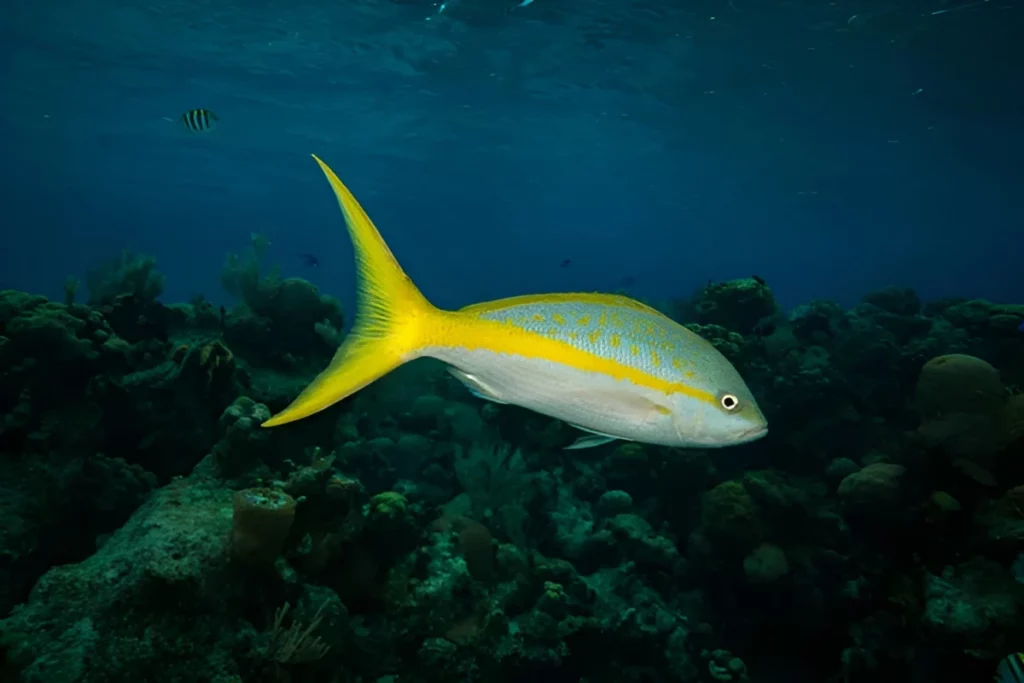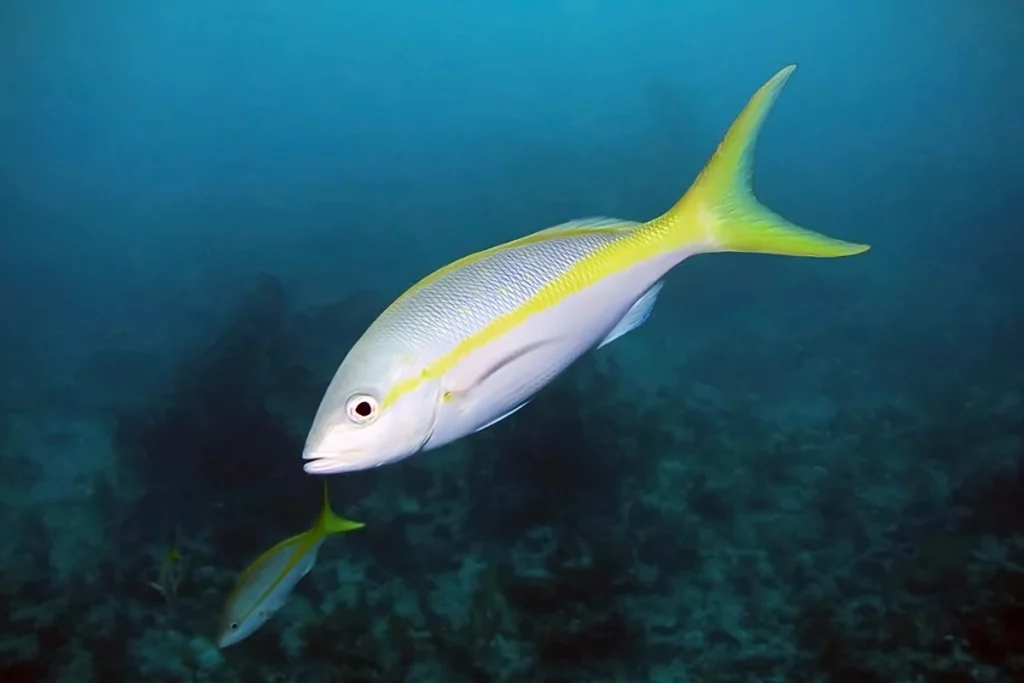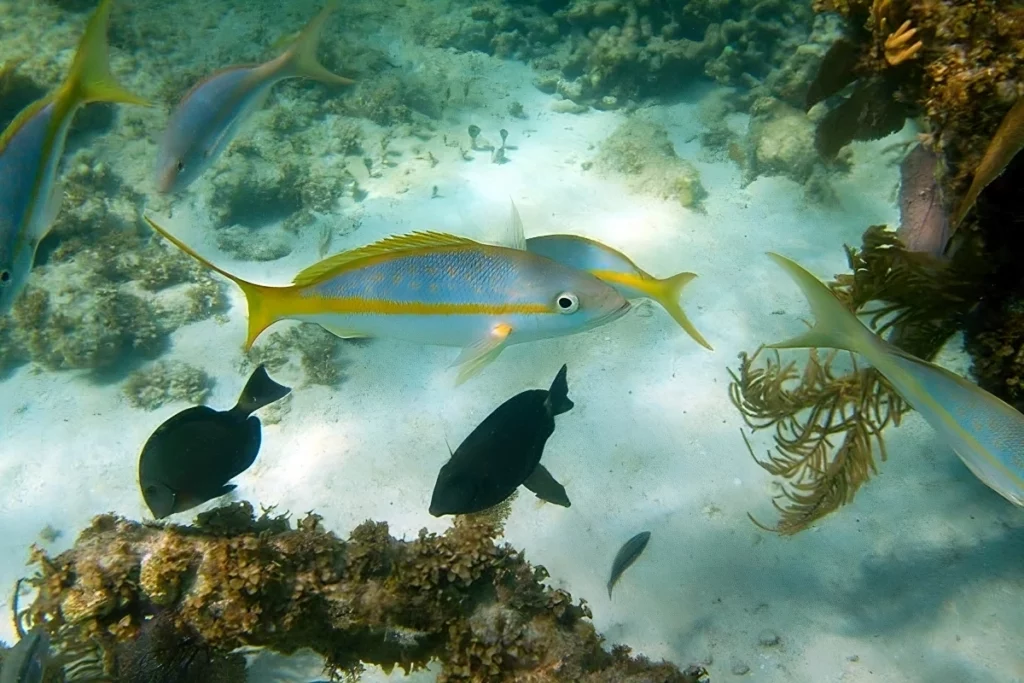Recreational bag limit and commercial fishing of yellowtail snapper is subject to various regulations, including size limits, to ensure the sustainability of the fishery and protect the species for future generations.
In this article, we will explore the yellowtail snapper size limit, its importance, and the regulations in place to manage this important fishery.
Importance of Size Limits
Size limits play a crucial role in both recreational and commercial fishing. They help to protect juvenile fish, allowing them to reach maturity and contribute to the population.
By maintaining a healthy and balanced population, we can ensure the long-term sustainability of the fishery. Understanding the specific size limits for yellowtail snapper is essential for anglers and fishermen to adhere to these regulations and contribute to the conservation of this species.
Overview of Yellowtail Snapper

Biological Characteristics
Yellowtail snapper are a long-lived species, with a lifespan of up to 17 years. They have an oval-shaped body that ranges from an olive to bluish color with yellow spots on their back, and their stomach has narrow pink and yellow stripes.
The species is named after a yellow lateral line that runs along their body, which widens towards their caudal fin (tail).
The maximum length for yellowtail snappers is 34 inches, and they can weigh up to five pounds. Females usually reach sexual maturity around three years of age, when they measure about 10 inches in length. Spawning occurs year-round, but has a noted decline in winter months, with peaks in spawning at different times, depending on the area of the population.
Conservation Status and Management Efforts
Sustainable fisheries are essential for the long-term health of marine ecosystems. The yellowtail snapper is an important fisheries resource where it occurs, with high production in Northeast Brazil averaging 1683 tons.year-1.
However, the species is vulnerable to overfishing due to the formation of spawning aggregations. Understanding the specific size limits for yellowtail snapper is crucial for managing this species and ensuring its long-term sustainability.
Yellowtail Snapper Size Limit Regulations
Current Size Limits
The current size limit for yellowtail snapper is 12 inches in total length (TL). This is a minimum size limit, meaning that any yellowtail snapper caught must be at least 12 inches in length before it can be kept.
There is no maximum size limit for yellowtail snapper, but anglers are encouraged to release any fish that are larger than the minimum size limit to help maintain a healthy population.
Geographical Variations
Size limits for yellowtail snapper can vary depending on the region. In state waters, the minimum size limit is typically 12 inches in total length.
In federal waters, the South Atlantic Fishery Management Council manages the yellowtail snapper fishery, and the minimum size limit is also 12 inches in total length.
It is essential for anglers to be aware of the specific size limits in the region where they are fishing to ensure compliance with regulations.
Yellowtail Snapper Commercial Regulations

For commercial fishing of yellowtail snapper, remember:
- Minimum Size Limit: 12 inches in total length
- Commercial Bag Limit: Check commercial regulations
- Gear Requirement: Non-stainless steel circle hooks for reef fish
In 2019 version of the nmfs enforced a closure in the South Atlantic EEZ to prevent overfishing. During this time, no sale or purchase of yellowtail snapper was allowed from the EEZ, and harvest in federal waters was limited to recreational limits. Stay updated on regulations for sustainable fishing practices.
Importance of Adhering to Size Limits
Ecological Benefits
Adhering to size limits is essential for the long-term sustainability of the yellowtail snapper population.
By protecting juvenile fish and allowing them to reach maturity, we can help maintain a healthy and balanced population.
This, in turn, preserves the overall marine ecosystem and ensures the continued availability of this important fishery resource.
Legal and Ethical Considerations required when fishing
Failure to adhere to size limits can result in fines and penalties for non-compliance. Additionally, promoting responsible and ethical fishing practices is essential for the long-term sustainability of the fishery.
By adhering to size limits, anglers can contribute to the conservation of the yellowtail snapper population and help ensure its long-term sustainability.
Practical Considerations for Anglers

Identifying the Correct Size
Anglers should be familiar with the minimum size limit for yellowtail snapper in their region and be able to accurately identify the correct size of fish.
This can be done by measuring the fish or looking for visual cues such as the presence of a yellow lateral line and a deep-forked tail.
Handling and Releasing Undersized Fish
If an angler catches a yellowtail snapper that is smaller than the minimum size limit, they should handle the fish carefully to minimize stress and injury.
Techniques for safe release include using a descending device to return the fish to the depth at which it was caught, venting the fish to allow it to expel air from its swim bladder, and using a venting tool to create a small hole in the fish’s body to allow it to expel air.
key regulations for Florida snapper fishing
Here’s a table summarizing the key regulations for Florida snapper fishing:
| Regulation | Details |
|---|---|
| Species | Silk snapper, Yellowtail snapper, Vermilion snapper |
| Size limit | 10-18 inches for Yellowtail snapper (12 inches or longer for keepers) |
| Bag limit | In effect in Key West for Yellowtail snapper |
| Bait | Live or fresh chunks of Mahjua or Bonita for Yellowtail snapper |
| Gear | Light leader and small hooks for Yellowtail snapper |
| Season | Year-round for Yellowtail snapper |
| Federal regulations | Check the South Atlantic Fishery Management Council’s website |
| State regulations | Check the Florida Fish and Wildlife Conservation Commission’s website |
Note: This table is a general summary and may not include all regulations for all types of snapper fishing in Florida. It’s important to check the specific regulations for the area and species you plan to fish.
Conclusion
The yellowtail snapper size limit is an essential aspect of fishery management, helping to protect juvenile fish and maintain a healthy and balanced population.
Anglers should be aware of the specific size limits in their region and adhere to these regulations to contribute to the long-term sustainability of the fishery.
By staying informed and promoting responsible and ethical fishing practices, we can help ensure the continued availability of this important fishery resource.


